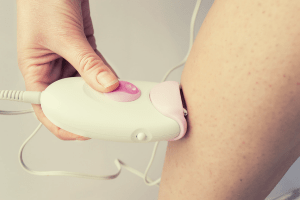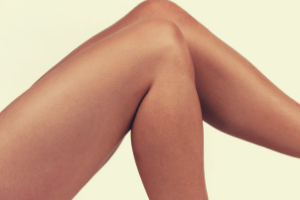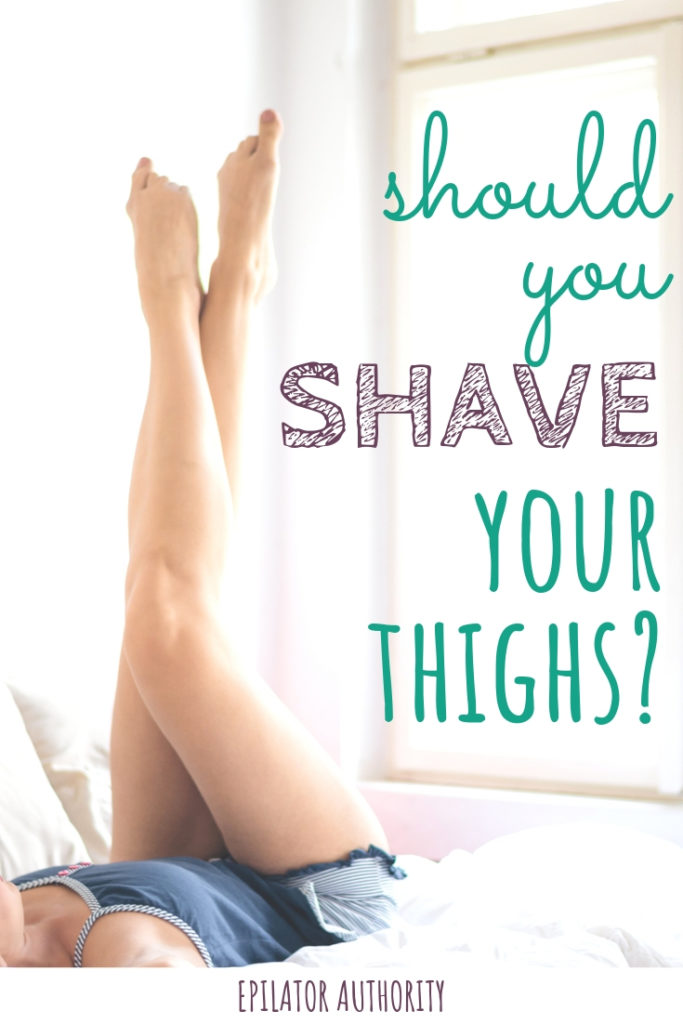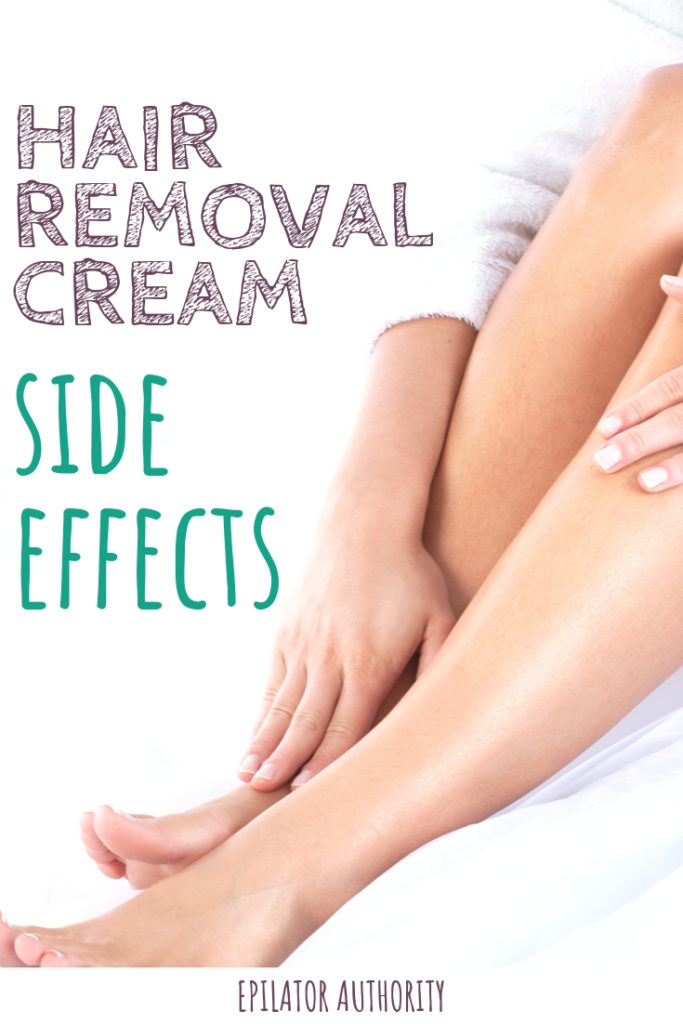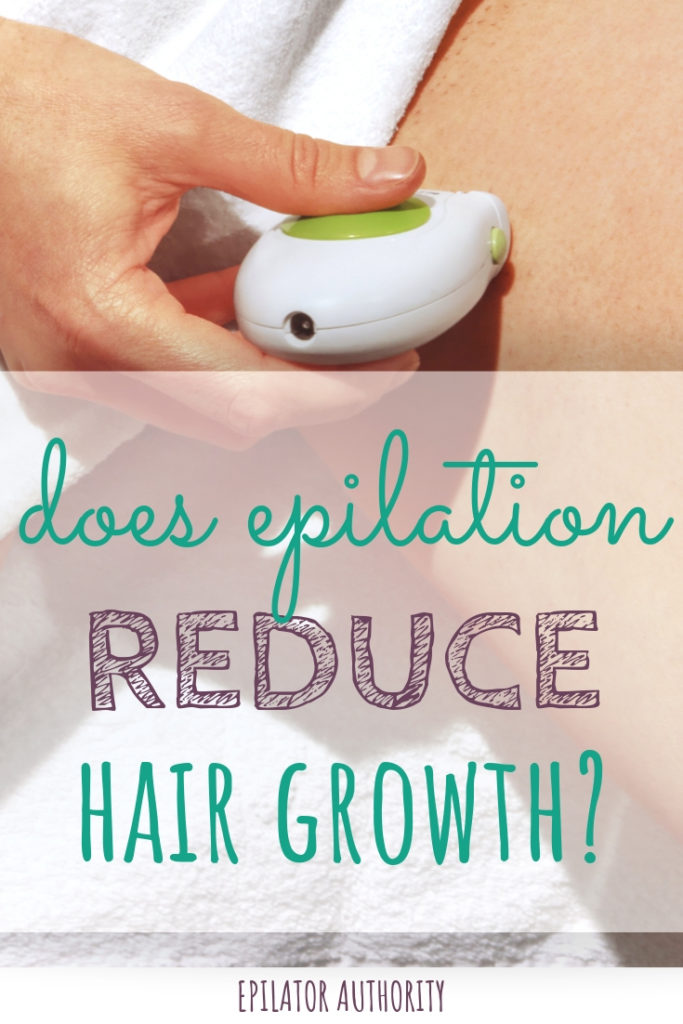So you have stomach hair that’s driving you nuts? Thankfully, my days of showing off my abs are over, so I just let my stomach hair grow wild and free like a hippie love child, but I understand the struggle. And I know how to epilate a belly like a boss.
Can you epilate stomach hair? You can safely epilate stomach hair. The main drawbacks to doing this are the pain and potential of ingrown hairs. The main benefits include less regrowth and many more days between hair removal sessions than with shaving.
Epilating the stomach is not for the feign of heart, however. In order to pull it off, you should do your research beforehand and know what you are getting into. Then you should plan ahead so you’ll get the best outcomes. Here are my best tips for epilating the belly:
1. Determine The Cause Of Your Stomach Hair
If you’ve always had more hair on your stomach than you’d like since puberty, you can probably thank genetics for that. However, if you’ve recently seen a change in the hair on your stomach, you may have a hormonal issue and it’s best to consult with a doctor to make sure all is okay.
There are many health issues that could cause unwanted, male-pattern hair (also called hirsutism). These issues include polycystic ovary syndrome, Cushing’s syndrome, and medication side effects.
Depending on the cause of your hair, you may need to have your underlying health issue treated. Or your doctor may prescribe medications or creams that will reduce the unwanted hair growth. Then you won’t have to worry about removing your stomach hair.
2. Decide If It’s Worth It
Do you even need to remove your stomach hair? Is it really that bad or are you just being hard on yourself?
Stomach hair is normal on both men and women. The color, thickness, and density vary from one person to the next, depending on hormones and ethnicity, but we all have some hair there. So if your stomach is covered 99.9% of the time by clothes and you’re not feeling overly self-conscious about it, skip removing the hair on your belly.
On the other hand, if your stomach hair bothers you and you’ll be showing off your abs often, epilating may be a path you’d like to try.
But epilating is not without side effects and is best for people who are in it for the long haul. You get the best results after regular use.
3. Get Your Hair To The Right Length
The worst thing you could do is start epilating fully grown stomach hair. It will be traumatizing, trust me.
Before you epilate, you need to get those hairs down to about a millimeter or two.
There are several ways you could go about this. You could just use an electric trimmer. Or you could plan ahead and shave, wax, or use any other hair removal method and then wait for the hairs to grow back to the proper length.
4. Prepare For The Pain
You cannot over-prepare for this, my friend. Probably one of the worse parts of epilating stomach hair is the pain.
But I’m pretty confident that it isn’t that much worse than epilating anywhere else on the body. Most of the horror stories I’ve heard were by people who didn’t trim their hair beforehand. If you’ve followed the previous tip, you’re already ahead of the game.
Besides that, there are many ways to keep your pain to a minimum.
Icing your belly for about 20 minutes before you start will help numb the skin. Another option is using heat by taking a hot shower beforehand or using a hair dryer to open pores, warm the skin, and reduce sensations of pain.
I have many more options for reducing epilator pain in my post about epilator pain.
5. Plan For Several Sessions
If this is your first time epilating a body part, you should probably expect to not finish your whole stomach in one session. It’s going to be intense. You will probably only be able to epilate a small section before you’ll need a breather.
So I would just plan to take several days. Doing a little each day until you’ve epilated your whole stomach. If you are able to do more, then great. It’s just important that you don’t have big plans for wearing a bikini the next day because that may not work out so well.
After you’ve gotten the whole stomach epilated and free of hair, you should epilate the whole stomach every week for a few weeks. This will help your body adjust to the pain and make sure you get all the hairs that are in different growth cycles.
After that, you can start epilating just once or twice a month when you start seeing multiple hairs growing back. By then, you’ll be a pro at using an epilator and the pain should be minimal.
6. Prepare A Chill But Sanitary Experience
You want the least stressful environment possible. So plan to try out epilation on your stomach when you don’t have a lot going on and you won’t be rushed. A quiet, relaxing evening is ideal.
Get all your supplies together and make sure your epilator is clean so you don’t spread bacteria to your pores, which could cause infection.
Then turn on some relaxing music or a movie and go for it.
7. Clean and Dry Your Belly Well
Make sure your abdominal is clean before you start epilating. Use the cleanser to remove oil, moisturizer, and dirt from the skin. Rinse well so that no residue is left. The cleaner the skin and hair, the better the tweezers can grab hold of your hairs.
Just as your skin and hair need to be clean, they also need to be super dry as well. Any moisture will make it harder for the tweezers to grab hairs.
If you use any numbing cream, wait until it has completely dried before starting.
To make your hairs even easier to grab, you can dust some cornstarch or baby powder on your abdominal as well.
8. Follow Proper After Care
If you’ve made it this far and still alive, pat yourself on the back!
Soothe that skin with some ice if necessary. Soothe the skin with an astringent such as witch hazel. Then slather on some moisturizer. Aloe based gel or lotion works well.
9. Beware Of Ingrown Hairs
Ingrown hairs are your number one enemy when using an epilator. And unfortunately, hair on the belly tends to be coarser and more prone to ingrown hairs than many other areas of the body, so you have to be hypervigilant.
Ingrown hairs are caused by dead skin cells blocking the hair from reaching the surface. So the best way to prevent them is to make sure you remove all those dead skin cells.
You do this by exfoliation. Exfoliating a day after epilating and then every other day or so will make a huge difference. You can use methods like exfoliating scrubs and massage sponges.
Or you can try a product with salicylic acid like Tend Skin (click here to compare prices and read reviews on Amazon). These help to remove dead skin that is still deep in the hair follicle and may work better than other exfoliation methods.
10. Consider Other Hair Removal Methods
Epilating may just be more trouble than it’s worth for belly hair.
If you only plan to remove belly hair a few times of the year when you’ll be at the beach, you may just want to use less painful methods like shaving or hair removal cream. It may appear as though more hair grows back, but that is just an optical illusion caused by the blunt tip when you haven’t removed the whole hair out by the root, so don’t worry about that.
On the other hand, if you’d like a hair-free stomach year-round, you may want to invest in other hair removal methods like waxing. Or semi-permanent methods like laser or IPL. These three types cost more than epilating but may be more suited for you depending on your pain tolerance and skin type.
And the last and most expensive option is electrolysis. This is the only method of permanent hair removal and should be done by a professional. However, if you are only going to focus on your belly hair, it cost may be reasonable.
11. Just Bleach It
If your hair is just dark, but not superabundant, bleaching can be a decent alternative to hair removal. It does require lighter skin and some exposure to chemicals, but you don’t have to worry about pain.
And if you are prone to ingrown hairs, it may be your best bet for dealing with your stomach hair without spending tons of money.
Related Questions
What is the best epilator for stomach hair?
My pick for best epilator for stomach hair is the Panasonic ES-ED50-N Multi-Functional Wet/Dry Shaver and Epilator (click to check it out on Amazon). This is one of the better epilators for sensitive areas. The gentle epilator head is just the right size for navigating the belly area. And the LED light makes it easy to see hairs. It also has extra protection that keeps skin from getting caught in tweezers.
Have more questions about epilation? Check out the Epilator FAQ and Beginner’s Guide!
Want to remember this? Pin this to your favorite Pinterest board so you can find it later!


